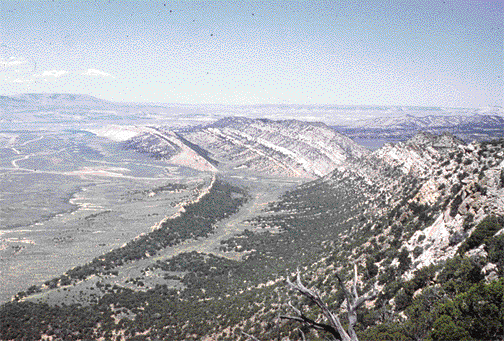
Highlight 8--Identifying Critical Energy Resources
In the early 1980's, natural gas in the United States was produced mainly from localized conventional stratigraphic and structural traps in oil fields, and there was little recognition of the potential for disseminated natural gas resources in more regional continuous accumulations (formerly termed "unconventional"). Since that time, the GD (with $15 million in funding from the DOE), has intensively investigated the origin and distribution of continuous gas resources in tight (low-permeability) reservoirs (fig. 8), basin-centered gas accumulations, and coal-bed methane. The GD work identified the magnitude of continuous gas resources in the United States and documented their origin and distribution, providing the basis for a new phase of natural gas exploration. Today, one-third of U.S. gas resources identified are from continuous-type accumulations (U.S. Geological Survey, National Oil and Gas Resource Assessment Team, 1995, p.2), and they will have growing importance in providing the U.S. domestic supply in the years 2000-2010. This resource has particular policy significance because much of it occurs on Federal lands in the Western United States and because national demand for gas--an energy fuel that is cleaner than coal or oil--is expected to grow. With funding from non-USGS partners, GD geologists have identified continuous gas resources throughout the world, including the former Soviet Union, Eastern Europe, China, and the Middle East.

Figure 8. Steeply dipping Cretaceous strata (rocks 136 million to 65 million years old) at the south end of the Green River basin near the Utah-Wyoming border. Cretaceous strata in the deeper part of the Green River basin contain major energy gas resources in tight (low-permeability) sandstone reservoirs. Photograph by B.E. Law, USGS. From McCabe and others (1993).
<----- Back to Goal 3
This page is <https://pubs.usgs.gov/circular/c1172/h8.html>
Maintained by L. McElroy
Last updated 04.08.98

